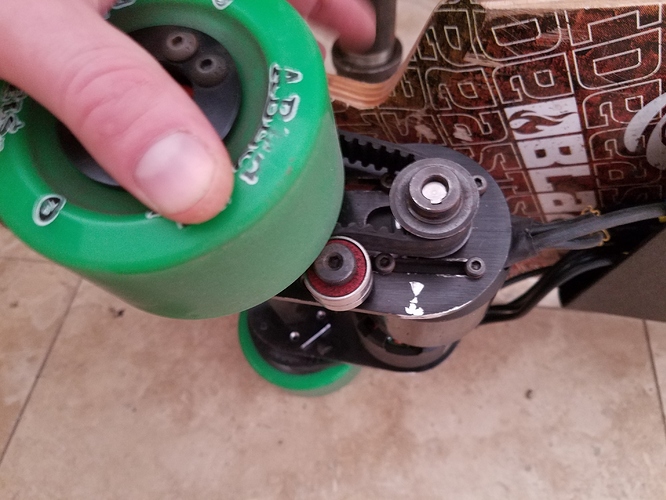Made a 30 minute ride here to the local Ace and they didn’t have anything. Headed to Home Depot.
Homeless despots around me are terrible for carrying metric anything would call around to see if they have what you need.
Haha love the name! My local Lowes and Home Depot are in he same parking lot so hopefully between the two I’ll make it happen.
Five stores later it looks like I will be ordering online…
Omg, I think you may have sent me down a rabbit hole the depths of which may never be known.  There’s a Fastenal only 10 minutes from me and I never knew.
There’s a Fastenal only 10 minutes from me and I never knew.
you know what? thats awesome! (what you did with the bolts) I sat for ages trying to work out how I would get idlers onto my soft roader build. in the end I just made the bracket longer and put a longer belt on.
Just realized there is one 20minutes from me…
Perhaps the most viable option for an idler is to press-fit a few bearings onto a shaft that is threaded on one side… or maybe glue? I played with these ideas for a while before I found the shoulder-bolt that fit into the short mount
I found a bolt. I was hoping for smaller bearings.
I mocked everything up and traced it before drilling anything. Make sure the nut clears your motor!!
The bearing goes on the slack side. As in the side that is traveling towards the motor, correct?
Get a 8x20mm button head shoulder bolt with m6 threads and nylok nut to match. It will be hard to find but the Allen head will be too big. If you don’t find it let me know and I’ll see what I can come up with at work.
Ya I need up going online and ordering a assortment of bearing to try out from 10mm to 22mm across, and in 6mm, 4mm, and 8mm bore. I ended up spending less then $20 on bearings. But I feel I can find some combo that will work.
I’m re-posting this from another thread on tools recommendations. Here is a trick using a drill press to thread a hole. Pretty handy for a diy idle pulley set up.
Motor pulls belt to go forward, so if mounted inboard, idler goes on bottom. If mounted outboard, as in a reverse mount, idler pulley goes on top
Keep in mind that the smaller the idler wheel, the more stress it puts on the belt, this reduces its strength and it wont last as long. For this exact same reason its not advised to use 12T motor pulleys or smaller, 14T or higher gives you better belt life and less tendency to skip as well. For idler wheels use skate bearings(22mm i think) at the very least, but a bit lager would be even better, you can also order real idler pulleys on ebay with various dimensions.
Agreed. Additionally, smaller bearings must rotate at significantly higher rpm. The larger bearings afford a better wrap around the motor pulley with less intrusion for space
I want to go as large as I can, and I’m hoping the bearing with the 6mm bore 22mm width will fit perfectly but I wanted options. I even have some 30mm smooth idle pulleys on hand, but I think they will be to big unless I build my own bracket.
I dig that it’s nice to not have to hand torque the motor to set tension, but this seems like it just adds an additional point of failure and wears it belts faster.
The only upside I can see it more contact for the belt in the pulleys but if the belt is tensioned correctly slippage shouldn’t be an issue. Am I wrong?
Partial credit. The main problem with belt tension is motor wear. Belts are cheap, and very strong. Motors do not have the bearings for both rotational and torsional thrust. Ive already wiped a set of motor bearings with tight belts. Ever have any problems with wheel pulley alignment? A loose belt will absorb some of that vibration as well


